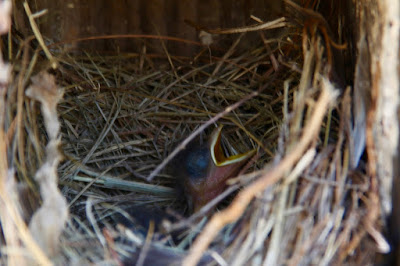 |
| late Summer, sandhill cranes staging and feeding
Photo by J. Harrington
|
The bluebird adults continue to arrive at the nesting box, presumably with insects to feed the chicks. Every once in a while a monarch or swallowtail butterfly drifts through the yard. Tomorrow is the first day of the last month of (meteorological) Summer. August brings us the Anishnaabe miini-giizis, berry moon, more goldenrod pollen than we want, more birds begin staging and feasting in preparation for migration (our hummingbird feeders have started to be emptied much quicker than at the beginning of the season), blooming asters will become more evident and local gardens and farmers will be providing an abundance of sweet corn, tomatoes and a multitude of other vegetables. The year will be approaching its fullness.
The Shapes of Leaves
Ginkgo, cottonwood, pin oak, sweet gum, tulip tree: our emotions resemble leaves and alive to their shapes we are nourished. Have you felt the expanse and contours of grief along the edges of a big Norway maple? Have you winced at the orange flare searing the curves of a curling dogwood? I have seen from the air logged islands, each with a network of branching gravel roads, and felt a moment of pure anger, aspen gold. I have seen sandhill cranes moving in an open field, a single white whooping crane in the flock. And I have traveled along the contours of leaves that have no name. Here where the air is wet and the light is cool, I feel what others are thinking and do not speak, I know pleasure in the veins of a sugar maple, I am living at the edge of a new leaf.
********************************************
Thanks for visiting. Come again when you can.
Please be kind to each other while you can.





























